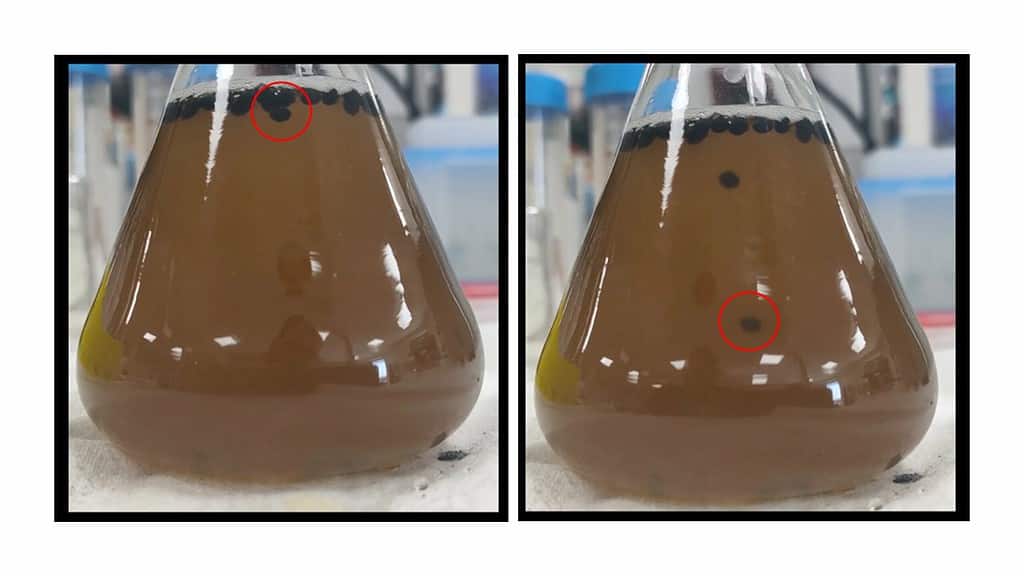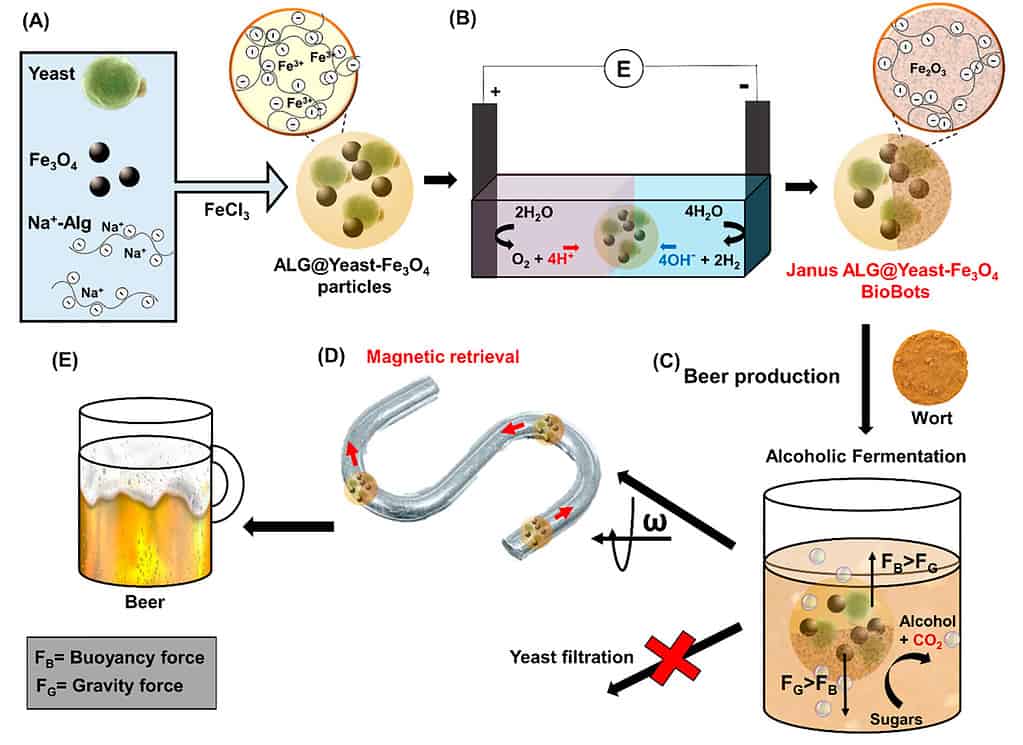
Craft brewers are known for their creativity and innovation in creating unique flavors and styles of beer. However, the brewing process can be lengthy, taking up to four weeks. Scientists have introduced a new solution to help speed up the brewing process by using self-propelled, magnetic “BeerBots” that contain yeast. These tiny robots can make fermentation go faster and eliminate the need for filtering, resulting in tastier beer.
Introducing BeerBots
The brewing process starts by extracting sugar from grains like malted barley, creating a watery solution called wort. Yeasts are then added to ferment the sugar, turning it into alcohol, carbon dioxide, and new flavor compounds.
The fermentation process can take weeks, and unwanted microorganisms can spoil the final product. But previous research suggested that encapsulating yeast in polymer capsules could speed up fermentation and minimize spoilage, which has now been put to the test.
In a study published in ACS Nano, Martin Pumera of Brno University of Technology in the Czech Republic and his team combined active yeast, magnetic iron oxide nanoparticles, and sodium alginate from algae to create 2-mm-wide BeerBot capsules.
One side of the spheres was made porous by exposing it to an alkaline solution in an electrochemical cell, allowing the carbon dioxide bubbles to propel the capsules upward.
Faster Fermentation with BeerBots

When the researchers used the biocompatible BeerBots to ferment malted barley wort, they found that the self-propelled capsules fermented sugar faster than free yeast cells.
As the sugar was used up, the yeast-containing capsules sank to the bottom of the flask, making it easy to separate the yeast from the final product with a magnet. This eliminated the need for an extra filtration step typically used to remove free yeast cells, simplifying the brewing process with no extra hassle.
BeerBots offer several benefits for brewers, including faster fermentation and simplified separation of yeast from the final product. Additionally, the collected BeerBots can be active for up to three more fermentation cycles, producing more beer.
The potential applications of this technology go beyond just beer brewing. The straightforward 3D printing design used to create these BioBots can be scaled up for industrial purposes in other industries as well. Imagine using these tiny autonomous machines to enhance other fermentation processes like wine or cheese production.
Of course, there are limitations to this technology. Manufacturing these nanoparticles can be expensive, and any extra cost in an industry famous for its small profit margins might not sound like a great solution to most brewers, especially small local micro-producers. However, with scale, the economics of this technology could make sense.
BeerBots are a promising innovation in the brewing industry, allowing brewers to produce beer more efficiently and with less waste. With BeerBots, brewers can focus on their craft and create a delicious beer with ease. Cheers to the future of brewing!









